Let me be honest with you. After 9 years with my English Bulldog Charlie, I've learned more about dog food through trial and error than I ever wanted to. You know that feeling when your bulldog's eyes start watering after switching foods? Or when their skin gets itchy for no apparent reason? Yeah, I've been there too many times.
Here's what I wish someone had told me on day one: not all dog foods work the same way for English Bulldogs. And the "best" food on paper might be the worst for your specific pup.
Why English Bulldogs Need Special Attention
English Bulldogs aren't your average dogs when it comes to nutrition. English Bulldogs can suffer from a sensitive stomach so may benefit from a limited ingredient diet and their flat-faced structure makes eating more challenging than you'd think.
After watching Charlie struggle with various foods over the years, here's what I've learned about what makes English Bulldogs different:
Digestive Sensitivity: Their shortened digestive tract means they process food differently. What works for a Golden Retriever might wreak havoc on a bulldog's stomach.
Breathing Challenges: As English Bulldogs have a brachycephalic (flat-faced) structure, eating and breathing can be a challenge. Choose a dog food with smaller kibble size or consider wet or moistened dog food to make it easier for them to eat and swallow. While choosing the right food helps, air purifiers can also help reducing environmental allergens that compound breathing issues.
Weight Management: These guys will eat themselves into obesity if you let them. Trust me, Charlie has tried.
The Protein Percentage Discovery That Changed Everything
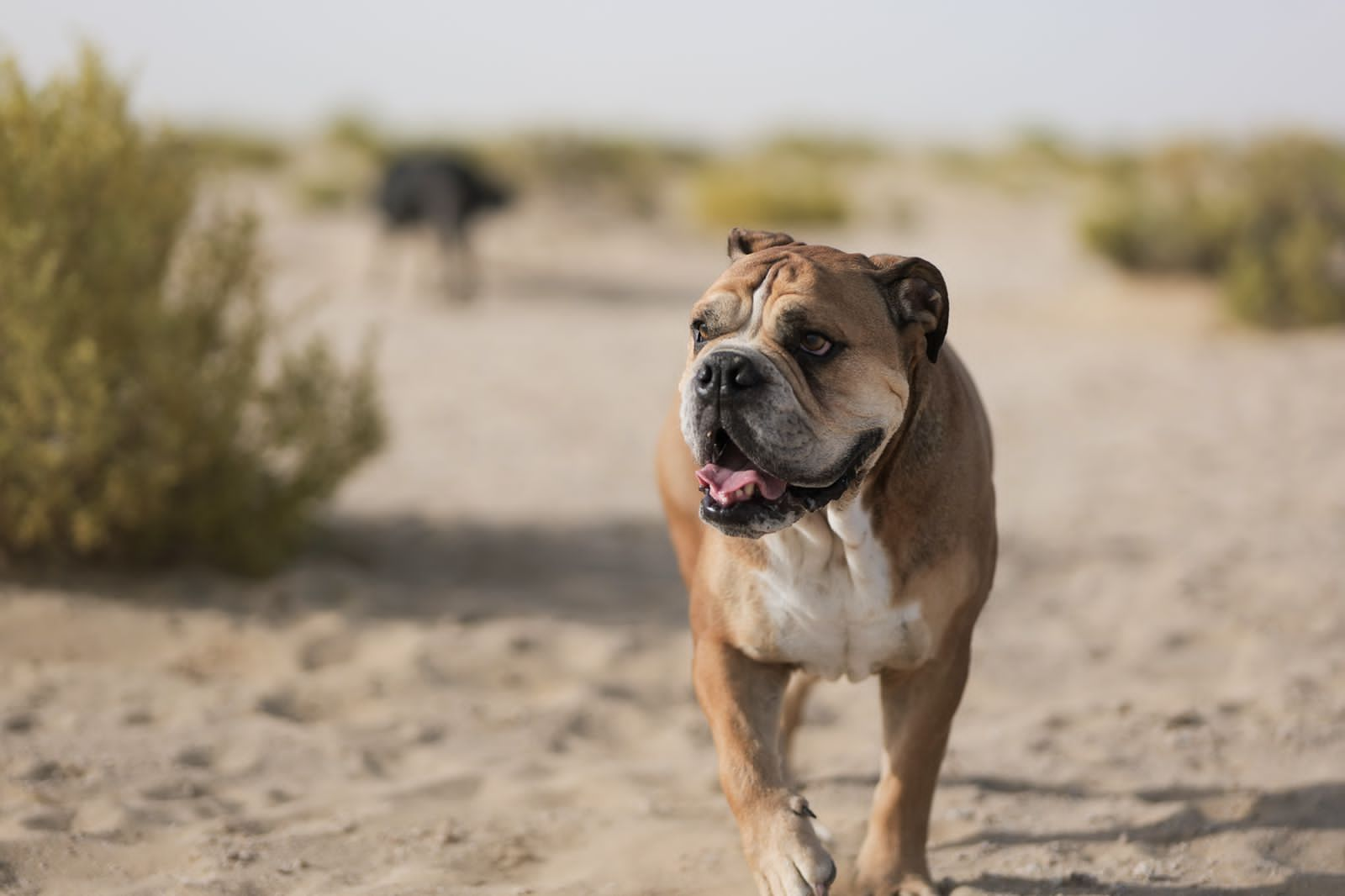
Here's something that took me years to figure out and I wish I'd known from the start: protein percentage matters more than you think.
After countless vet visits and food trials, I discovered that Charlie does best when his protein percentage stays between 18-24%. Any higher and we'd see:
- Watery eyes within a week
- Skin allergies flaring up
- Soft stools that nobody wants to deal with
The AAFCO minimum dietary protein requirement for a growing dog is 22.5% dry matter (DM) and 18% DM for an adult dog, but English Bulldogs often thrive on the lower end of this spectrum.
Why I Rotate Charlie's Food Every Few Months
This might sound crazy, but switching dog food every few months is one of the best things I've done for Charlie's health. Here's why:
A rotation diet prevents that from happening by limiting exposure to potential allergens. When dogs eat the same protein for extended periods, keeping your dog on the same protein for a long time will eventually lead to allergies. This is most commonly seen in itchy, dry skin.
The science backs this up: If exposure to the offending allergen continues, the immune system ramps up its production of immunoglobulin E, also known as IgE. These antibodies grow wise to the presence of the allergen in the body, triggering an allergic reaction that typically worsens over time.
I learned this the hard way when Charlie developed an allergy to chicken after eating the same chicken-based food for two years straight.
Based on years of experience with my English Bulldog Charlie, the best dog foods for English Bulldogs require protein levels between 18-24% and food rotation every few months to prevent allergies. Top brands include WOLFSBLUT varieties, Dog's Love horse protein, Hill's Science Plan Lamb & Rice, Barking Heads and JOSERA. Higher protein percentages often cause watery eyes and digestive issues in this breed.
The Best Dog Food Brands for English Bulldogs (From Real Experience)
Let me share the five brands that have actually worked for Charlie and my friend's bulldogs. These aren't in any particular order - what works depends on your dog's specific needs.
Quick Summary: Best Dog Foods for English Bulldogs (2025)
Keep protein between 18-24% and rotate foods every 4-6 months to prevent allergies.
A quick note on Royal Canin: You might notice I never gave Charlie their Bulldog Adult dry food, despite it being heavily marketed for bulldogs. After researching their ingredients, I found Royal Canin adds too many low-quality fillers and by-products for my comfort level. Charlie deserves better than that.
1. Dog's Love Dry Dog Food
I tried the horse protein variety and honestly, it surprised me. The premium dry food varieties from DOG'S LOVE are characterised by a particularly high meat content with up to 90% animal protein of the total protein.
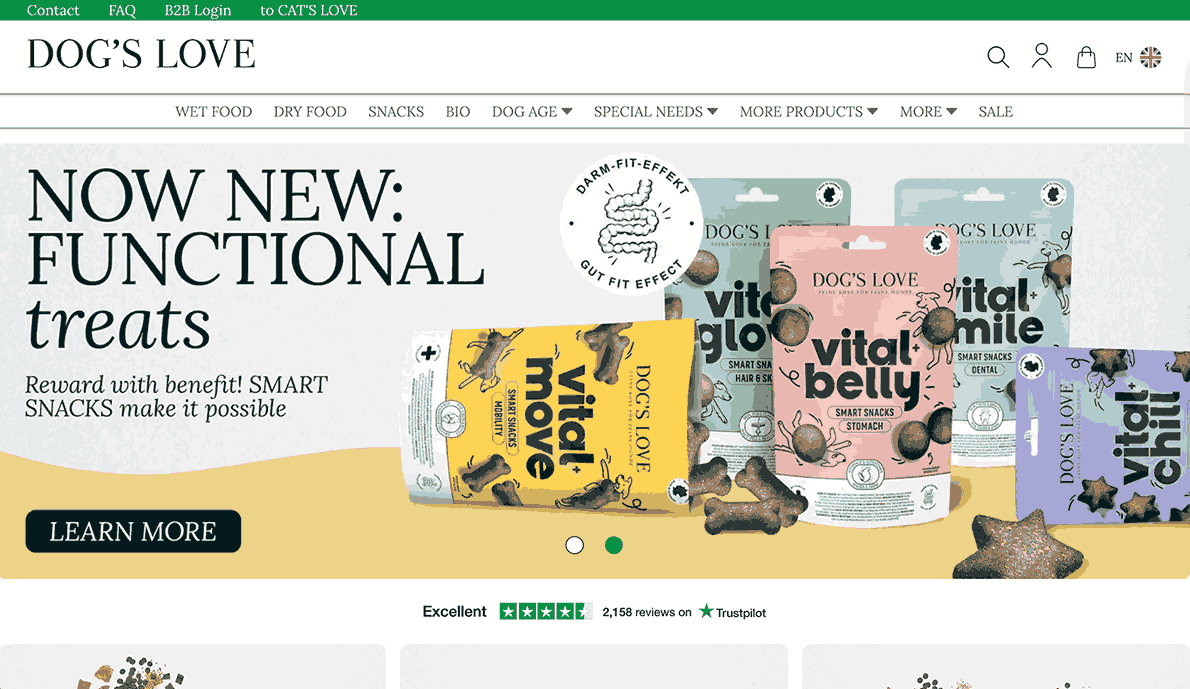
What I love about it:
- Single protein source (great for allergies)
- No weird fillers or artificial preservatives
- Charlie's coat looked amazing on this
The downside:
- More expensive than other options
- Limited availability in some areas
2. WOLFSBLUT - My Top Three Picks
I've tried three different WOLFSBLUT varieties with Charlie and honestly, he loved all three. Here's the breakdown:
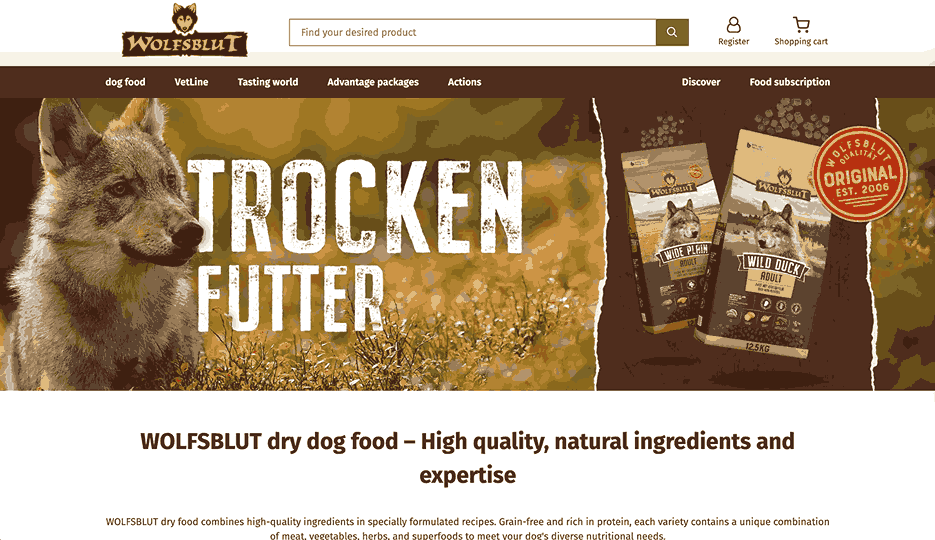
1. WOLFSBLUT Down Under Adult
Contains valuable superfoods such as blackberries, elderberries, chokeberries, dandelion, topinambur and ginseng with valuable ingredients. The Angus beef base worked perfectly for Charlie's protein needs.
2. WOLFSBLUT Dark Forest Adult
This one features venison and sweet potatoes. The analytical constituents show Protein 26%, Fat 16%, which puts it at the higher end of Charlie's tolerance, but the venison was gentle on his stomach.
3. WOLFSBLUT Red Rock Adult
The kangaroo and pumpkin combo was perfect for Charlie during a sensitive stomach phase. fresh kangaroo meat 30%, potatoes 22%, sweet potatoes 16%, pumpkin 8% made this incredibly digestible.
3. Barking Heads - The Crowd Pleasers
I've tested both Chop Lickin' Lamb and Doggylicious Duck with Charlie.
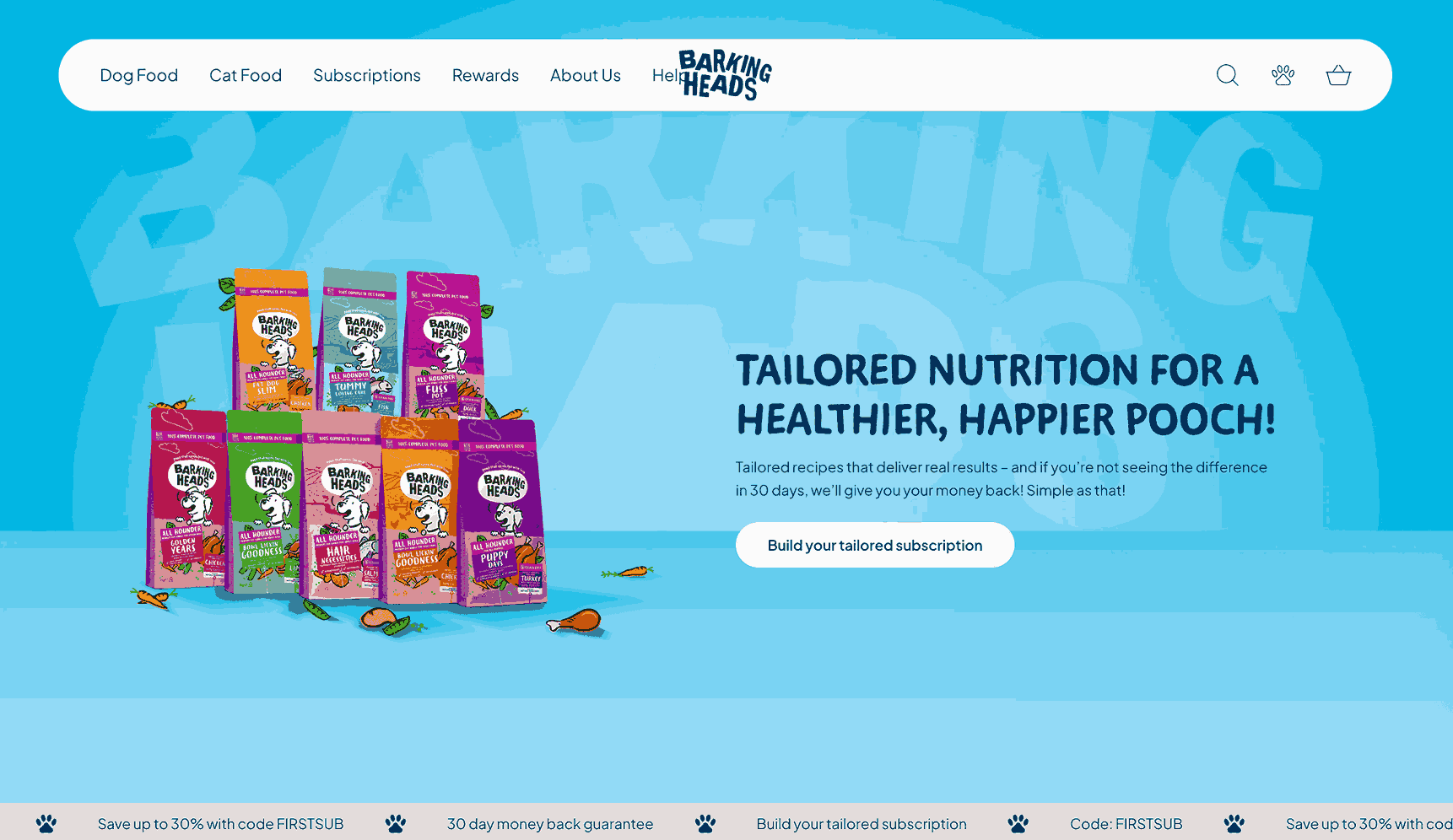
1. Chop Lickin' Lamb
Composition: 51%* Lamb includes - Lamb *(32%), Dried Lamb *(19%), Brown Rice (16%), Oats, White Rice, Peas (5%). The protein level sits at Crude Protein 23%, Crude Fat 17% - right in Charlie's sweet spot.
2. Doggylicious Duck
The duck protein seemed easier on his stomach than chicken and Charlie always got excited at mealtime with this one.
4. Hill's Science Plan Adult Lamb & Rice - Hydrolized Protein for Easy Digestion
This was actually one of our earlier successes and I keep coming back to it when Charlie needs something reliable. Protein 21.2%, Fat content 14.2%, Crude fibre 1.7% puts it right in the sweet spot for most English Bulldogs.
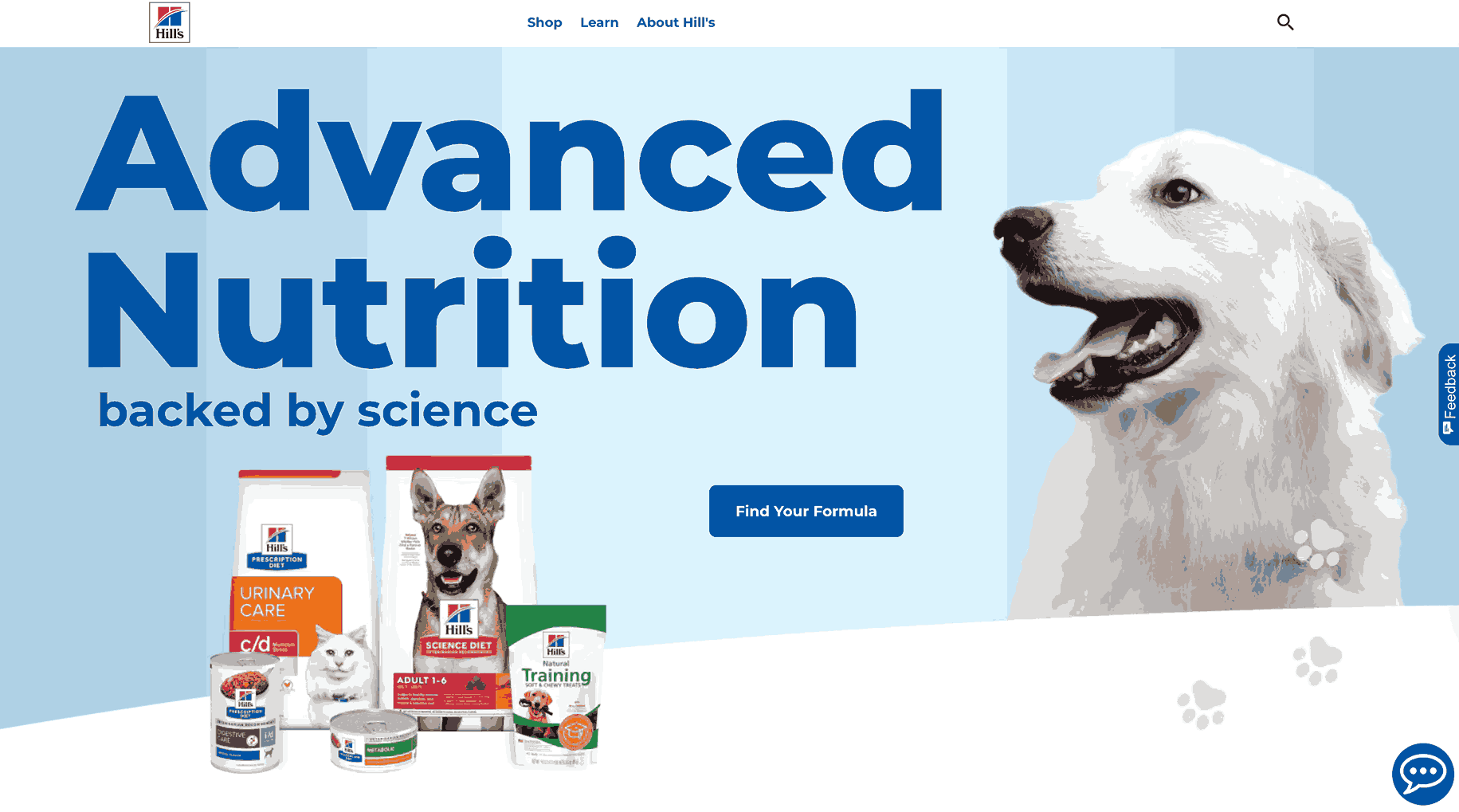
What worked for Charlie:
- Consistent quality and availability
- The lamb protein was gentle on his system
- Maize, wheat, lamb meal, soybean meal, animal fat, maize gluten meal, brewers' rice provide good digestibility
- Contains omega-6 fatty acids 3.2% for coat health
The reality check:
- Contains grains, which some bulldogs don't tolerate
- More affordable than premium options
- Easy to find in most pet stores
Hill's leads the way in combining natural ingredients with cutting-edge science and while it's not the fanciest option, it consistently works for Charlie when other foods cause issues.
5. JOSERA - The German Precision

1. Salmon & Potato (Grain-Free)
This became our go-to during Charlie's allergy flare-ups. Dried potato (48%), dried salmon protein (19%), poultry fat, beet fibre, potato protein, carob flour, hydrolysed fish protein, minerals, ground chicory root [natural source of inulin], herbs, fruits.
Reduced-protein: light formula with low protein- and energy content, as well as moderate mineral levels to help relieve metabolism and organs - perfect for bulldogs.
2. SensiPlus
Great for dogs with sensitive stomachs. The duck and rice formula worked well when Charlie needed something gentle.
What to Look for in English Bulldog Food
Protein Sources That Work
Based on my experience and research, these proteins work best:
- Lamb: Gentle and less likely to cause allergies
- Salmon: Many English Bulldogs are sensitive to common meats such as chicken or beef, but this particular recipe draws most of its animal protein from salmon and trout
- Duck: Usually well-tolerated
- Novel proteins (kangaroo, venison): Great for rotation
Ingredients to Avoid
- High corn content (small amounts are fine)
- Artificial preservatives
- Excessive protein (over 25% for most bulldogs)
- Some English Bulldogs may have food allergies or sensitivities. If your Bulldog displays signs of a food allergy, such as itching, gastrointestinal upset, or skin issues, consider a limited ingredient or hypoallergenic dog food
Feeding Guidelines for English Bulldogs
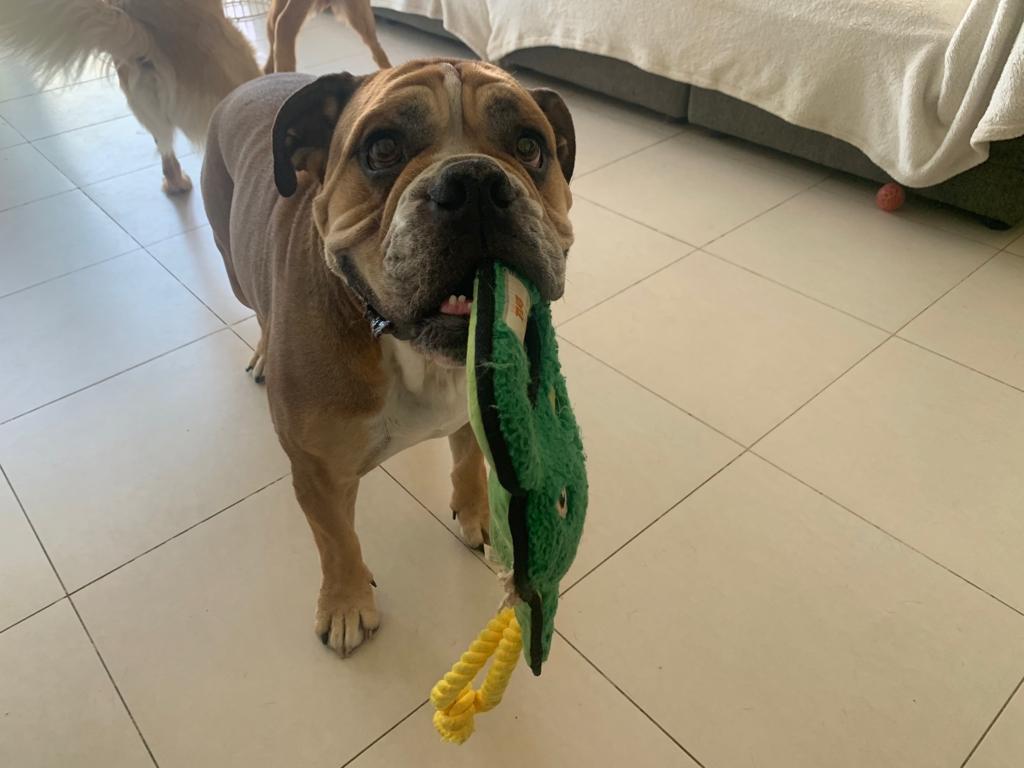
Portion Control
Here's what works for Charlie (62 lbs):
- Morning: 1 full cup
- Evening: 1 full cup
- Treats: Large pig ears are his favorite, gets 1 each day
Kibble Size Matters
The kibbles are approximately the size of a chickpea for Hill's Science Plan, which works well for bulldogs. Wave-shaped kibble design makes it easier for Bulldogs to pick up and chew - this isn't marketing fluff. Charlie struggles with tiny kibble and inhales large pieces.
The Rotation Schedule That Works
Here's how I rotate Charlie's food:
- Month 1-2: WOLFSBLUT Down Under
- Month 3-4: Dog's Love Horse protein
- Month 5-6: Hill's Science Plan Lamb & Rice
- Month 7-8: Barking Heads Lamb
- Month 9-10: JOSERA Salmon & Potato
I transition gradually over 7-10 days, mixing old and new food.
Common Mistakes I Made (So You Don't Have To)
Mistake #1: Focusing Only on Premium Brands
Expensive doesn't always mean better for your specific dog. Charlie thrives on mid-range JOSERA and Hill's Science Plan but had issues with some premium brands.
Mistake #2: Not Reading Protein Percentages
I used to think "more protein = better." Wrong. Charlie's sweet spot is 18-24%.
Mistake #3: Switching Foods Too Quickly
Always transition over 7-10 days. I learned this after a few messy accidents.
Mistake #4: Ignoring Individual Reactions
Every bulldog is different. What works for Charlie might not work for your pup.
Signs Your Bulldog Food Isn't Working
Watch for these red flags:
- Watery eyes (often first sign of protein intolerance)
- Excessive scratching or skin irritation
- Soft stools or diarrhea
- Gas (worse than normal bulldog gas)
- Loss of appetite
- Dull coat
Special Considerations by Life Stage

Puppies (8 weeks - 12 months)
Foods for puppies and pregnant dogs should contain at least 22.5% protein. I recommend starting with single-protein sources to identify any allergies early.
Adults (1-7 years)
This is when rotation feeding really shines. Stick to the 18-24% protein range and rotate every 2-3 months.
Seniors (7+ years)
Lower protein options like JOSERA Salmon & Potato work well. Also for senior dogs: thanks to a lighter formula that makes it suitable for older dogs.
Budget-Friendly Options That Actually Work
Not everyone can afford premium food and that's okay. Here are budget options that worked for Charlie:
- Hill's Science Plan - Veterinary recommended at reasonable prices
- JOSERA varieties - German quality at reasonable prices
- Barking Heads during sales - Often 20-30% off
- Buying in bulk - 15kg bags offer better value
The Supplement Question
I keep it simple with Charlie:
- Omega-3 during winter months
- Probiotics when switching foods
- Joint support as he gets older
Hill's Science Plan already contains omega-6 fatty acids 3.2% and many quality foods include joint support ingredients.
Frequently Asked Questions
What is the best protein percentage for English Bulldogs?
Based on my experience with Charlie and research, 18-24% works best for most adult English Bulldogs. Higher percentages often cause watery eyes and allergies.
How often should I change my English Bulldog's food?
I rotate Charlie's food every 2-3 months to prevent allergies. Rotational feeding reduces the risk of developing allergies or sensitivities to specific ingredients by exposing dogs to a variety of proteins.
Can English Bulldogs eat grain-free food?
Yes, many bulldogs do well on grain-free diets, especially those with sensitivities. However, not all bulldogs need grain-free food - Charlie does fine with Hill's Science Plan which contains grains.
What's the best dog food for English Bulldog puppies?
Look for foods with 22-25% protein and smaller kibble size. I recommend starting with single-protein sources like lamb or salmon to identify any allergies early.
How do I know if my English Bulldog has food allergies?
Watch for watery eyes, excessive scratching, soft stools, or skin irritation. These are often the first signs Charlie shows when a food doesn't agree with him.
Should I feed wet or dry food to my English Bulldog?
Both work, but dry food helps with dental health. Choose a dog food with smaller kibble size or consider wet or moistened dog food to make it easier for them to eat and swallow due to their flat faces.
What's the best cheap dog food for English Bulldogs?
Hill's Science Plan and JOSERA varieties offer excellent quality at budget prices. Barking Heads is also affordable, especially when on sale.
How much should I feed my English Bulldog?
This depends on age, weight and activity level. Charlie (62 lbs) gets 2 full cups (human tea cups) total per day, split into two meals. Always follow feeding guidelines and adjust based on your dog's body condition.
The Bottom Line
After 9 years with Charlie, here's what I know for sure: there's no single "best" food for all English Bulldogs. What matters is finding what works for YOUR dog and being willing to adjust.
The brands I've shared - Dog's Love, WOLFSBLUT, Hill's Science Plan, Barking Heads and JOSERA - have all worked well for Charlie at different times. The key is understanding your bulldog's specific needs and not being afraid to rotate foods every few months.
Remember, if your bulldog's eyes start watering or they develop skin issues, it might be time to try a different protein source or lower protein percentage. Trust your instincts - you know your dog better than anyone.
Charlie's taught me that patience and observation beat expensive marketing every time. Start with one of these trusted brands, monitor your dog's response and adjust as needed. Your bulldog's health and happiness are worth the extra effort.
.svg)










